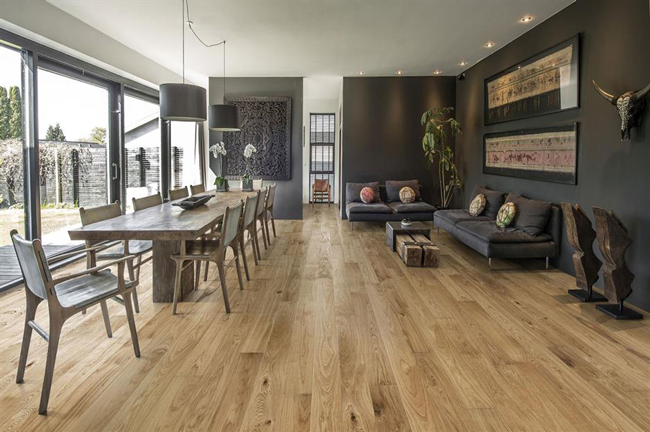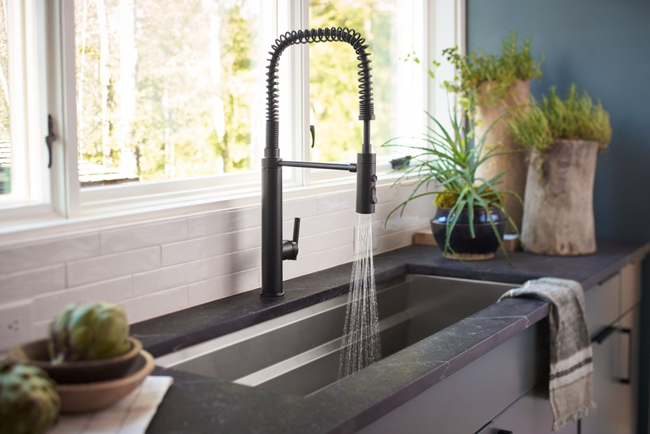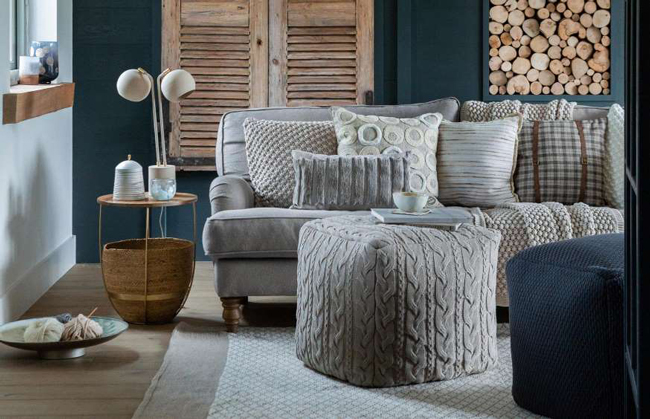

One of my passions is wood, old boards that make up walls or benches or doors, boards piled up for recycling, abandoned tables whose planks have so many stories to tell. Wood in its multitude of varieties is a universal building material. It’s readily available and can be sawn, carved, drilled and shaped to create the materials we use every day. Wood’s versatile nature is one reason it is a mainstay inside and outside the home. This and the fact that its raw beauty adds character and warmth makes it invaluable.
Mark and Sally Bailey are owners of Bailey’s Home, a 30-year-old store and workshop for building and designing with wood that is nestled in England’s Herefordshire countryside. Their philosophy is the basis of how they live and work, what they sell, and the topic that underlies each of their five popular books, published by Ryland Peters & Small. “Surrounding yourself with natural materials is a way to achieve a balanced and peaceful atmosphere in the home, and wood is the principle ingredient in that recipe for harmony.” In their latest book, Made of Wood in the Home, the authors visit 12 homes that each capture the essence of living surrounded by wood buildings and objects. They begin by examining wood’s outstanding features.
Wood is sculptural, easily taking on many forms. Everyday objects, bowls, spoons, utensils, games, toys, candlesticks share a handmade patina that glorifies imperfections and individuality whether they are on display or used every day. Trade in plastic and metal for wood and you will feel the difference.
Wood’s natural beauty often requires little adjustment. The texture and patterns in wood stand alone. Wayward grains, knots, rings and gnarly bits, beautiful in freshly cut wood, intensify with age. A mix of natural and painted pieces sets up a contrast between light and dark. The Baileys prefer a light-handed touch of whitewash in white and grey. The lightly brushed layer of paint allows natural knots and grains to show through, even magnifies them. In the bathroom shown here, a wall of reclaimed boards, each scuffed, marked and painted in a unique way, creates a focal point. The old corner cupboard balances on the side to store the practical necessities for bathing. And note how the light bounces off the boards. White and grey paint act as a unifying factor in a decorative scheme. These light colours amplify daylight by reflecting it around the room.
Recycling is a recurring theme in my columns. Giving new life to discarded pieces is a thoughtful way to decorate and add character to your surroundings. The Baileys remind us that wood’s longevity and malleability means it can go through many lifetimes of use, changing its function as it goes. When you bring into your home a piece of wood furniture or object that has outgrown its usefulness, you prolong its history, giving it another story to tell.
Each ‘wood’ home in the book incapsulates the owners’ love for this common material.> Most are artists. They surround themselves with old and new, repurposed and refinished. Seen here, The Great Hall of a medieval half-timbered longhouse dating back to the 1400s is linked to a resting place for 12 knights that fought in The War of the Roses. Centuries later, in the 1920s a spectacular parquet floor was laid by the Twinings family. Elsewhere in the house, tea chests are used as bedside tables and night stands.
The homes and philosophy behind their decoration is inspirational and yet simple, not out of reach for anyone who is inclined toward living with nature’s most cherished and majestic trees.




